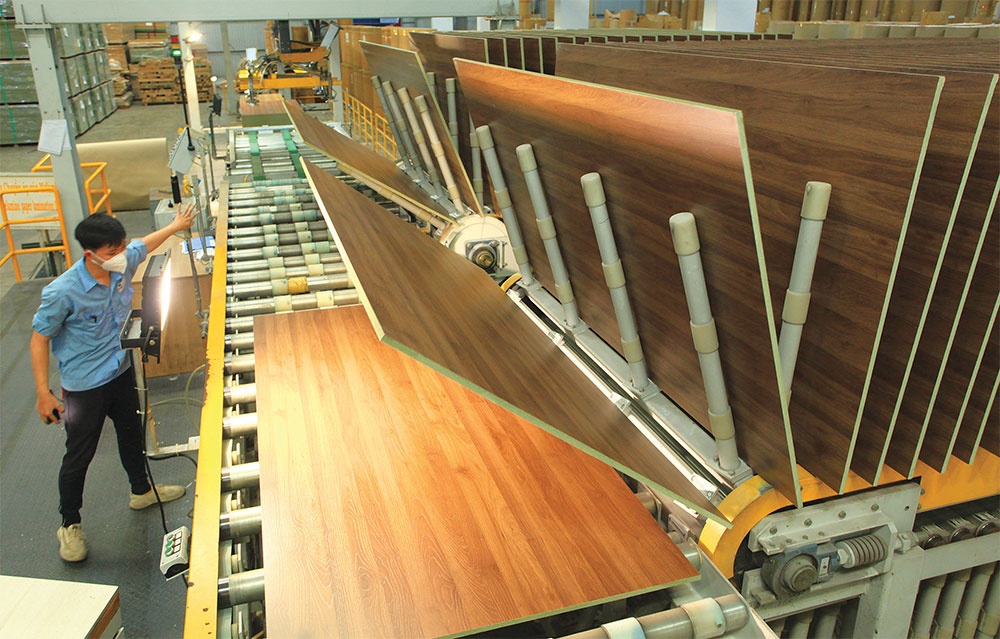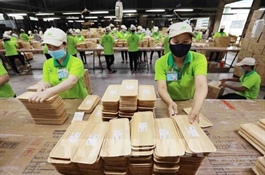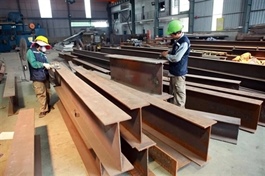Dearth of orders signifies shift in timber industry
Dearth of orders signifies shift in timber industry
The likelihood of a dearth of orders in the coming year in the timber industry is diminishing, according to industry insiders.

Vice president of the Handicraft and Wood Industry Association of Ho Chi Minh City (HAWA), Nguyen Chanh Phuong, told VIR that the timber market may gradually improve in the next 6-8 months.
Interest rates are falling, with the Fall 2023 Retail Report by Colliers from November revealed that almost half of retail chains in the US have intentions to expand within the next five years.
“This is the most evident signal that the string of order crises that has persisted since the second quarter of 2022, and resulted in the closure of numerous factories in Vietnam and the unemployment of thousands of workers, may be coming to an end,” Phuong said.
Although the order crisis moderated in the fourth quarter of 2023, the decline in demand continues to have significant repercussions, including a direct impact on the supply of wooden furniture originating from Vietnam.
According to Phuong, the output of timber furniture sold during the Christmas and New Year purchasing seasons of 2024 will increase by a mere 3-5 per cent, as opposed to the usual 15-20 per cent increase. Phuong is therefore concerned that the market will continue to be weak in the first and second quarters of this year.
Vietnam, the second-largest exporter of timber and wood products in Asia, failed to meet its export target of $17 billion for 2023, according to Do Xuan Lap, president of the Vietnam Timber and Forest Product Association.
“Wood and forest product exports are projected to have generated $13.5 billion in 2023, a 15.5 per cent decrease from 2022, as per the General Department of Vietnam Customs. This year could remain challenging since consumption remains minimal and there are additional rules from imported countries,” Lap said.
The Carbon Border Adjustment Mechanism went into effect in October 2023, and the EU Deforestation Regulation will do so at the end of 2024, which present challenges for companies engaged in exports. One such obstacle, Lap said, is the necessity for precise determination of the geographic coordinates of production plots.
“The number of government investigations into the application of trade remedies to the timber industry is increasing in the US, while labour and employment regulations are being enforced more strictly. Additionally, forest products exported from Vietnam to this market in Japan must be FSC-certified,” Lap said.
Although acquiring new orders and maintaining production speed remain critical objectives, he expressed a distinct viewpoint in contrast to his previous remarks.
“Demand and orders have decreased significantly due to the market and the pandemic. Consequently, many manufacturers have shifted their operations to exporting designs rather than processing based on available samples,” he added.
Lap asserted that a paradigm shift occurred in Vietnam’s timber processing sector when major manufacturers extended their reach into prospective export markets, including Saudi Arabia and Dubai, to supply interior products for newly developed real estate ventures.
The wood processing industry is presently concentrating on trade promotion initiatives, most notably the Hawa Expo 2024 in March, which will provide a platform to finalise orders for April through May.
























